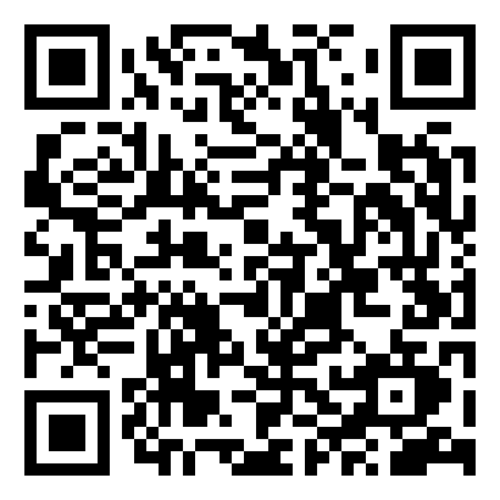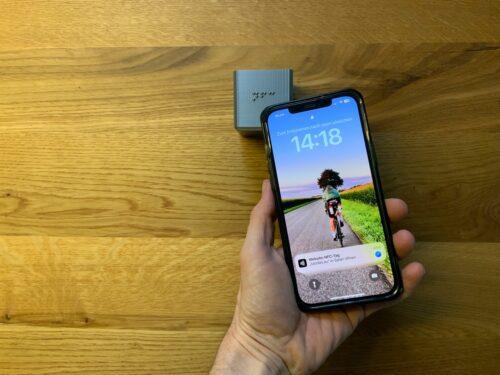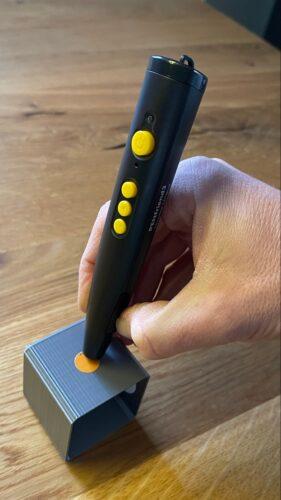Braille can be added to a 3D printed model for visually impaired learners, as described in article 3. Braille. Raised black lettering is also possible.
However, this option is limited to a few, important pieces of information due to the space required. In practice, a model often needs to be supplemented with a wide range of information. This can be, for example, the description of the task in the case of a geometry exercise, but also instructions on how to use the model including further additional information.
In the case of maps, this information would typically be represented by point, line and area symbols. Here reference should be made to Articles 4.1, 4.2, 4.3 and 4.4. These symbols must be explained in an additional key. It is common to produce this key as a swell copy.
If you wants to add a large amount of text or additional information such as links to websites, audio or video files to the model, you quickly reaches the limit of what can be done with a key. At this point, the following techniques are highly recommended:
QR code
A QR code (quick response code) is the two-dimensional version of the barcode. With a smartphone or tablet, the information can be read by scanning it with the camera function or a QR code app. The advantage of the QR code is that text is easily accessible for visually impaired people using their smartphone. This means it is possible to handle a 3D print independently.
Through clever coding, up to 4,296 characters, including punctuation and special characters, can easily be stored. This means that entire texts can be stored in the QR code. As a rule, however, QR codes are used to store links to websites. The advantage here is that the storage is not static. If it is only the link that is stored, the content can be edited via the website at any time. Another advantage is that the QR code becomes larger and more complex the more content is stored on it. A link only represents a short text, so the size of the QR code can be kept small. Tactiles.eu recommends adding links to text pages to your model.
Creating a QR code is easy if you use one of the many free services on the Internet. For example, a QR code can be generated within seconds via the site https://trueqrcode.com. The link to the website tactiles.eu looks like this as a QR code:
This image file can now be printed out and glued onto the model. Self-adhesive labels can be used for this.
To access the information in the QR code, the code must be scanned with a camera on an electronic device. For visually impaired learners, this is not always easy, depending on their age and technical abilities. The smartphone must be at a certain distance from the QR code and held at right angles so it fits the frame. In addition, neither the QR code nor the smartphone must be moved too quickly when attempting to scan. Likewise, the student must know that there is a QR code on the model. A sticker is tactile, but if the student is not aware that it contains a scannable QR code, he or she would not scan it. A 3D printed caption saying “QR code” in braille would alert the student to the fact that a QR code is present.
Our database tactiles.eu offers a QR/NFC tag option, enabling a linked text page to be created. An empty page is created via the menu, which can then be filled with the desired text. This text can be edited at any time without changing the link. The link to this page can be written into the QR code via the above-mentioned web service.
NFC
Using NFC (Near Field Communication), the same information can in principle be stored and read out as via a QR code. To do this a smartphone or tablet with an integrated NFC chip (which usually comes as standard nowadays) and a so-called NFC tag are required. These tags are usually self-adhesive and are available for well under one euro each.
One of the many free NFC apps for iOS or Android can be used to save the text or link on the tag. The text or link to be saved is inserted in the app and can then be saved on the tag provided. Write protection can also be set so that the tag cannot be deleted or overwritten by the user.
The great advantage of this over the QR code is the simplicity of scanning. Using near-field technology, you simply bring the smartphone close to the NFC tag. No precise alignment is required. As a result this method is preferable to the QR code method. Depending on the smartphone and operating system, it is often not even necessary to have an app open. When approached, a push message appears with the information stored on the NFC tag. In this case it is also advisable to store a link instead of text on the NFC tag, as the information can then be changed at any time without having to re-record the chip. In contrast to a link, reading tags with stored text also requires the installation of an NFC app, depending on the smartphone.
An NFC tag is only 1-2mm thick and so can even be stuck inside the model and still be readable from the outside. This has the advantage that the sticker cannot peel off. However, the smartphone must be held very close, so some form of reference on the outside of the model to the NFC tag present inside is recommended.
Our database tactiles.eu offers a QR/NFC tag option, enabling a linked text page to be created. An empty page is created via the menu, which can then be filled with the desired text. This text can be edited at any time without changing the link. The link to this page can be written into the QR code via the above-mentioned web service.
Penfriend
The Penfriend is a small electronic device for voice-based labelling of items. The device was developed especially for visually impaired people, which is why it is very easy and accessible to use.
In addition to the actual device, small self-adhesive stickers are needed, which can be recorded with the help of the Penfriend. One hour of recording time is available per sticker. Both the recording and listening is done using the Penfriend. As well as recording your own voice, MP3 files can also be loaded and stored on the Penfriend’s internal memory. When used in the context of the classroom, the possibility of using headphones is a useful option.
The Penfriend is particularly useful if several labels are to be used with one model. These can be accurately scanned and listened to with the Penfriend. Even younger pupils can easily operate the device. One disadvantage, however, is the storage of the audio files on the Penfriend. While a QR code or NFC tag can be scanned with any smartphone, a Penfriend sticker only works with the corresponding Penfriend.




